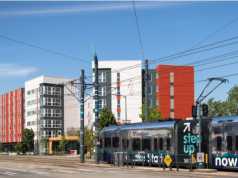Plan would keep wastewater, pollution out of Seattle’s waterways
West Ship Canal sewer overflow project, increased street cleaning are key plan components
SEATTLE – April 27, 2015 – (RealEstateRama) — Seattle Public Utilities (SPU) today proposed a 15-year plan to prevent millions of gallons of untreated wastewater and polluted runoff from flowing into creeks, lakes, the Duwamish, and Puget Sound.
The $600 million proposal would fulfill a 2013 agreement in which the city promised to reduce sewer overflows to comply with state and federal law. The plan would also keep millions of gallons of storm runoff out of public waterways, reducing threats to human and aquatic health and the region’s quality of life.
The Seattle City Council will consider the proposal starting next week.
The cost of implementing the proposal for the next five years is factored into the utility’s strategic business plan, approved by City Council last year. The business plan aims at capping average rates for all SPU services — drinking water, sewer, drainage, garbage and recycling — to an annual average of 4.6 percent through the year 2020.
The largest project under the proposal is a 2.7-mile, $374-million combined sewer overflow storage project, along the north side of the Lake Washington Ship Canal between Ballard and Wallingford. Jointly funded by Seattle and King County (which is also making substantial improvements to its wastewater system), the facility would prevent average annual overflows of about 50 million gallons of wastewater and stormwater runoff — enough to fill about 75 Olympic-sized swimming pools.
The Ship Canal storage project is scheduled for construction starting in 2018.
Other important features of the plan include:
- A capital project to treat polluted stormwater runoff from approximately 254 acres in the South Park drainage system, before it empties into the Duwamish River.
- Expansion of Seattle’s street cleaning program. Starting in 2016, new routes will be added, the frequency of street cleaning will be increased, and the street cleaning season will be extended. This expansion will keep about 40 additional tons of pollutants out of local waterways each year while reducing flooding (by preventing clogged storm drains). Increased street cleaning will also improve air quality and help keep neighborhoods clean.
- Coordinating with local residents and community groups to identify neighborhood blocks to build natural drainage systems in the Longfellow Creek, Piper’s Creek, and Thornton Creek watersheds. These projects will slow the flow of runoff and improve water quality in the three creeks, which have known water quality issues.
Background
About one third of Seattle’s stormwater drains through dedicated storm sewer pipes, which send about 13 billion gallons of runoff annually into public waterways — creeks, lakes, Puget Sound — in and around the city. The other two-thirds of the city is served by a combined sewer system, which transports both drainage runoff and sewage to regional wastewater treatment plants owned and operated by King County. Both systems are permitted under the federal Clean Water Act.
During heavy rainfall, the combined sewer system can become overwhelmed with storm runoff. When this happens, untreated wastewater discharges at designated locations into waterways — rather than into streets, homes and businesses. These discharges, called combined sewer overflows (CSOs), are a mixture of untreated stormwater (about 90 percent) and wastewater that can adversely affect receiving water bodies.
In the last 50 years, Seattle and King County have greatly reduced the annual CSO discharge volumes by an estimated 20 to 30 billion gallons. Seattle’s 2013 consent decree agreement with the Washington Department of Ecology (Ecology) and the U.S. Environmental Protection Agency (EPA), seeks to further reduce CSO volumes.
But while the city has devoted substantial resources to controlling CSOs, only limited resources have been available to address the water quality impacts of discharges from its municipal separate storm sewer system. Ecology has found that stormwater runoff is the main pathway through which toxic pollutants enter Puget Sound, and the Puget Sound Partnership has identified stormwater pollution prevention as a top priority.[i]
In developing its plan, SPU undertook a two-year, comprehensive public outreach process. See public participationsummary table, page 4-14.
SPU also worked with a five-member panel of scientists, who reviewed the data, methods, and assumptions used to develop the plan. The panel, which acted as a technical sounding board for SPU, concluded that the integrated plan “allows the City to implement stormwater control projects that will significantly benefit water quality in receiving water bodies, while delaying lower-benefit [CSO] projects.”
Learn more about Seattle Public Utilities, at: www.seattle.gov/util.
Watch a short video about SPU.
Follow SPU on Twitter: www.twitter.com/SeattleSPU.




